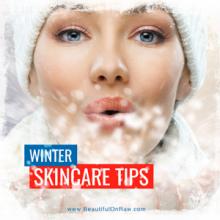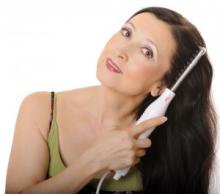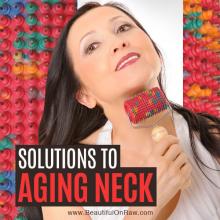Microneedling: Right and Wrong
Published: (November, 2019)
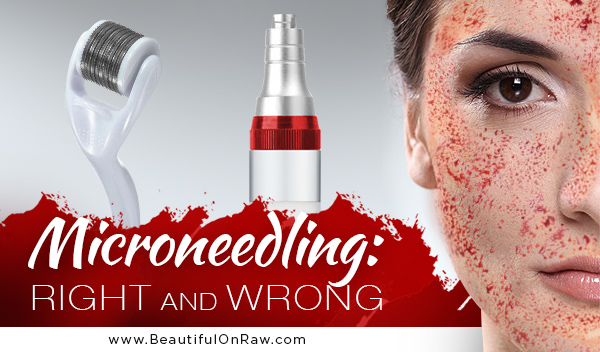

A newsletter subscriber recently asked me: Tonya, what do you think about microneedling? There are so many YouTube videos, people sharing their experiences, with before and after pictures. It looks like this is a way to get rid of acne scars and get that glowing-from-within look...
Do distinguish, please, between two kinds of microneedling: cosmetic and medical microneedling. Cosmetic microneedling uses short needles—less than 0.5 mm—to stimulate your skin’s outer layers, the epidermis and upper dermis. By contrast, medical micro-needling uses longer needles—up to 2.5 mm and beyond. Such work must be done only by a physician or a skin care professional. However, there are YouTubers out there attempting it themselves.
Microneedling tears the epidermis (the skin’s outermost layer). The created punctures wreak havoc on your skin’s defenses, forcing them to work hard at repairing these small tears. More specifically, the needling tears through collagen fibers, breaking them down. When we’re young, that collagen is easily replaced. But as we age… not so much! Many unpleasant skin conditions can result.
Also, what do we mean by that word glow? Consider this: the complexion of a healthy child running toward you would merit the term glowing. But equally, swelling gums or inflamed skin also has a certain “glow,” albeit of a different sort.
Out there on YouTube, you can find some “microneedlers”—people who’ve actually drawn blood. Afterwards their faces are inflamed and swollen. While their skin is healing, it will look plump, firm, and pink. That is how damaged skin looks. “Luminous” from inflammation and superficial swelling.
Still, you might think: What’s a little inflammation? Can’t I put up with a bit of that for the sake of recovering the glow of youth? The trouble with that? Inflammation itself is the reason for premature aging.
Medical microneedling is a fairly new procedure. But there are already some desperate cries for help out there on the internet. People report adverse effects, that appear weeks, or even months after treatment—very dry skin… rough texture… hypo-pigmentation... indentations… allergic reactions, just to name a few.
My concern? The more medical microneedling you indulge, the more scar tissue you’ll make. The more scar tissue there is in your skin, the less room you’ll have for collagen, elastin, and similar proteins needed by healthy skin. Result: loss of volume, already reported by some.
Soon after a medical microneedling procedure is done, and once the redness subsides, people report their skin looks brighter and their skin tone is more even. But after a few weeks, the change is not so dramatic—definitely not enough to justify the cost. A recent study done by American Academy of Dermatology showed that microneeedling alone only gives temporary results which do not last. Providers like to emphasize that users need multiple treatments in order to see results.
I agree, at least to this extent—To have a nice complexion, you do need to take steps regularly. But what if that step costs $1000 a session? Then “regularly” becomes a real challenge.
From the time I was working on my first book, Your Right to Be Beautiful, twenty years ago, I’ve become very observant toward how older women fare, complexion-wise. I am always on the lookout for skincare tips.
When I see a mature woman with an exceptionally nice complexion, I compliment her and start a conversation, hoping to learn what she did in her younger years that led to the present remarkable state of her skin. Now, when I'm in my sixties, I meet fewer and fewer women who are older than me that have good complexions. But when I do, I learn that they’ve never been aggressive with their skincare. It’s always daily, consistent care.
As I was growing up, I can remember my mom having swollen face with scary black and brown scabs, as she recovered from yet another chemical peel. So short-lived were her results that I told myself: I will never do this. And I haven’t.
Chemical peels were very popular in the sixties and seventies. They promised then the very same benefits promised by current methods such as microneedling: “As healing occurs there will be an improvement in the skin’s texture and appearance… Stimulates epidermal growth, with collagen stimulation in the underlying dermis, giving a tightening effect and a more even distribution of melanin…” Judging by the skin of that 1960s-1970s generation, those products didn’t deliver these results.
You might say: This is a different procedure!
But is it? Damage is damage. Your skin doesn’t care who or what damaged it or whether their intentions were good. Do it yourself with a Derma Roller. Get a licensed cosmetologist to do it. Or engage the priciest cosmetic surgeon in town. Chemical peel… laser… radio-frequency treatments… microneedling… Once again: Damage is damage.
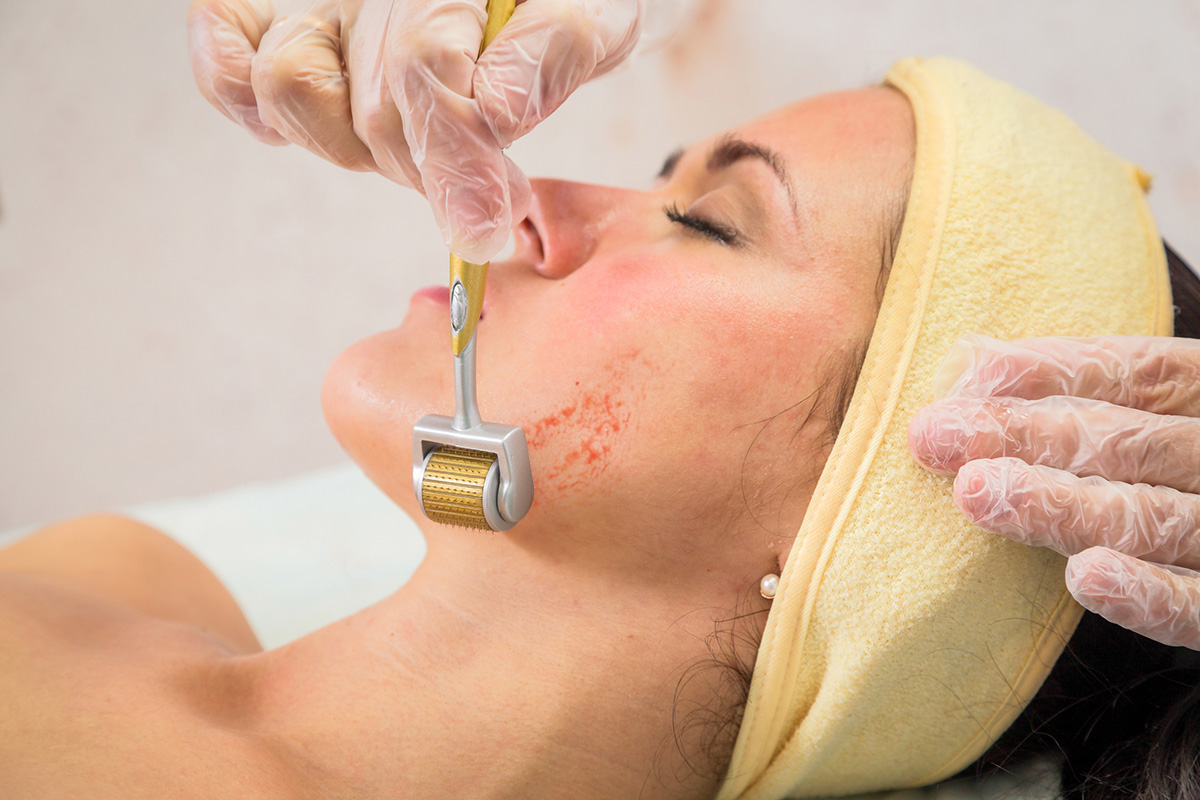
If you damage but slightly—to a level more like stimulation—your skin will learn to heal itself quickly. If you damage to a more serious level, your skin will go through irreversible changes. The three most common complaints: loss of volume, sagging skin, and hypo-pigmentation.
As far as simple cosmetic microneedling… I think it’s a very good practice when performed as part of your daily natural skincare. But medical microneedling, where you go for the blood? I'm adamant: We should not damage our skin to that extend.
Truly good skin comes from within. Don't try to outsmart the body. If you remove some blemishes from your skin but you don’t address the cause, they’ll be back.
Eat a highly raw diet. Exercise. Follow a diligent beauty routine, that you can do yourself every day. Just do these simple things, and no Kardashian with her “vampire facial” will ever match the quality and health of your skin.
2. Derma Roller or RejuvaRoll…Which is Better?
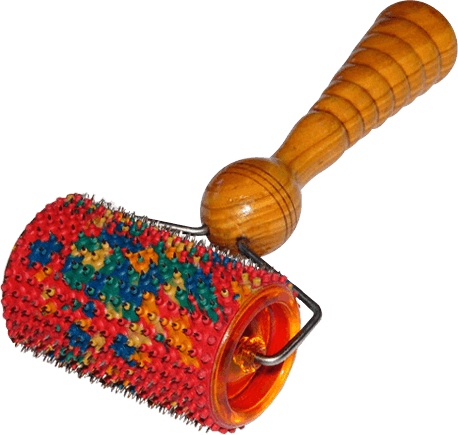
I started offering the RejuvaRoll in 2006, way before anyone ever heard about Derma Roller. Its unique and brilliant design was developed by a doctor in Ukraine more than 25 years ago. I gave it my own name, RejuvaRoll, with the designer’s permission, and his company makes the rollers for me to my own detailed specifications.
It's a unique technology in which needles made of certain metals are coated with other metals in various combinations. Then the needles are specially arranged on a rubber base.
Keep in mind, RejuvaRoll is designed never to penetrate the skin. What’s more, it’s designed to make your skin pink, not bloody, and is made to give it a healthy, light stimulation. Light stimulation: yes. Invasive damage: never!
Needles of nearly any length or diameter can penetrate the skin if they’re placed far enough apart. Safety does not depend on pin length, but on how close together the pins are placed.
A standard Derma Roller has 192 surgical steel micro-needles. If you use it on your skin, go with a needle size of no more than 0.5 and never use it to the point of drawing blood.
By contrast, our RejuvaRoll features 490 micro-pins, each about 2 mm long. Because they are set so close to one another, they will never penetrate your skin.
For microneedling your scalp, RejuvaRoll is better—no doubt about it. Key reason: the RejuvaRoll’s cylinder is made of soft, medical-grade rubber that makes great contact with your scalp. This flexible pin bed does a much better job of covering your concave scalp than the rigid, cylindrical Derma Roller.
RejuvaRoll having more than twice the number of pins in a pliable, soft bed means you’ll have a better, gentler contact with your skin. And more effectiveness.
A feature unique to RejuvaRoll… the pins of four different elemental metals contact your skin: copper, iron, zinc, and silver. This facilitates a beneficial process called electrophoresis—a benefit Derma Roller doesn’t offer.
These metals, in micro-doses, are part of your blood’s makeup. Trace elements—these four metals included—are vital for our well-being. The beneficial effect of the RejuvaRoll begins the moment the tips of the RejuvaRoll’s differently charged needles contact your skin, producing a galvanic current at their point of contact.
Perform your RejuvaRoll micro-needling in the evening, just before bed, so the tiny indentations from the needles will plump up by morning. If I do use my RejuvaRoll during the day, I use it gently on my cheeks just for that rosy look, so there’s no need to apply any blush. And I use it on my scalp daily, especially around the temples, where most people my age have thinning hair.
RejuvaRoll is a great beauty aid. And it’s a real help in staving off those telltale signs of aging on your face and head. It also can be a great holiday present for a friend or a family member.

